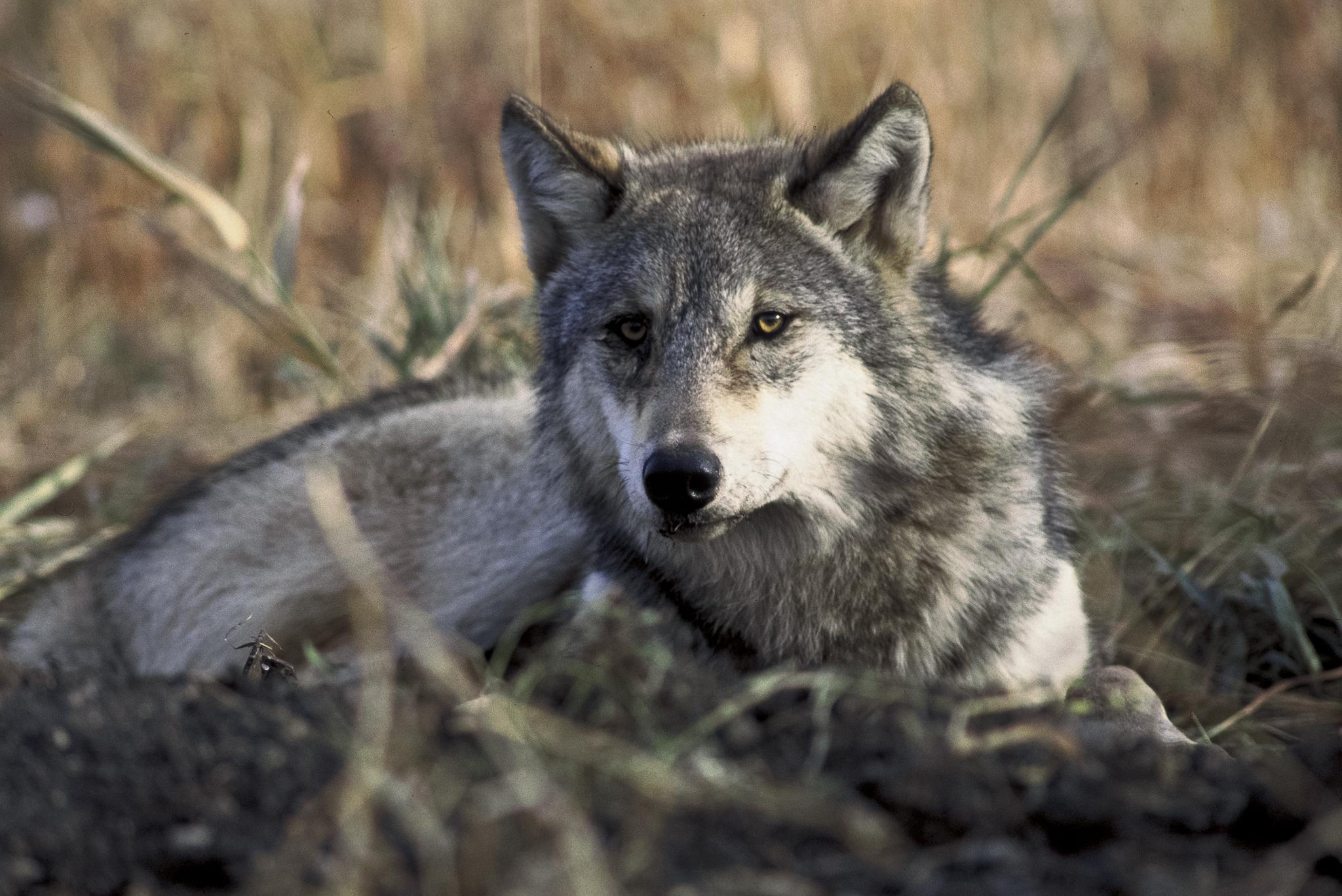Phase 2 of State’s Wolf Plan Begins: More Management Tools, More Questions
April 8, 2025

California’s gray wolf population is now considered to be self-sustaining after first re-entering the state in 2011. Image courtesy of the US Fish and Wildlife Service.
CALIFORNIA — Last Wednesday, the California Department of Fish and Wildlife (CDFW) announced that it would begin the second phase of its gray wolf conservation plan, which could provide authorities with additional tools to manage problematic wolves. The announcement followed Sierra County’s declaration of a state of emergency on Tuesday, prompted by a troubling increase in livestock kills and human encounters with wolves in eastern Plumas and Sierra Counties.
According to CDFW’s “Conservation Plan for Gray Wolves in California,” released in 2016, Phase 2 is characterized by a shift in wolf population growth from immigration to natural reproduction within California. This phase begins once four breeding pairs are confirmed for two consecutive years, building on Phase 1’s focus on establishing an initial population through wolves migrating into the state.
As part of Phase 2, CDFW will launch a review to assess the status of gray wolves in California. The agency will also explore legal options under state and federal endangered species laws to issue permits for more aggressive hazing methods in specific situations, such as when wolves threaten livestock. Each phase aims to balance wolf conservation with the needs of local communities.
On Monday, Sierra County Sheriff Mike Fisher met with CDFW Director Chuck Bonham, Chief Nathaniel Arnold, and most Northern California sheriffs to discuss Phase 2 and strengthen communication between local law enforcement and CDFW. Fisher anticipates a lengthy process to define permissible hazing techniques and the depredation permitting process, noting that the meeting offered little new insight. “We did not get any definitive answers that aren’t already laid out in the phase two planning,” said Fisher.
Public safety remains Fisher’s top priority. Unlike with bears or mountain lions, he cannot currently issue a public safety declaration to trap and euthanize a problematic wolf, and he seeks clearer guidelines from CDFW. Fisher also advocates for more protection against property damage, stating, “There is no legal avenue for protecting properties such as livestock and pets.” While a compensation process exists for ranchers to claim losses from confirmed wolf kills, dissatisfaction persists due to difficulties in proving claims to CDFW.
In the coming months, CDFW plans to introduce an online tool offering location data for GPS-collared wolves, enhancing transparency for residents and ranchers. Additionally, the agency will release its first annual report on wolf conservation and management, summarizing data from 2015 through 2024. Sheriff Fisher expects this report to be a “very interesting” read, shedding light on the state’s reintroduction efforts. Amid uncertainty about future steps, Fisher says he will advocate for residents and ranchers, explaining, “I will continue to push both on the legislative bodies, both federal and state, that we need a clear legal pathway to help these ranchers when it comes to dealing with loss of livestock and the public safety side.”
The final phase of CDFW’s plan, Phase 3, will begin when eight confirmed breeding pairs are present in California for two consecutive years. Currently, five of the state’s seven known wolf packs meet the breeding pair criteria. Though details remain unclear, reaching this threshold could lead to the issuance of lethal depredation permits for problematic wolves, similar to policies for other predatory species. As California navigates this transition, the challenge lies in harmonizing wolf recovery with the safety and livelihoods of its rural communities.
Featured Articles

Phase 2 of State’s Wolf Plan Begins: More Management Tools, More Questions →
April 8, 2025
California begins Phase 2 of wolf plan, balancing conservation with managing increased livestock attacks and encounters.
FCMAT Slams Past PUSD Leadership as Deficit Soars to $8.7 Million →
April 11, 2025
Plumas County Faces Federal Funding Cuts, Departments Adapt →
April 10, 2025
Downieville Welcomes World-Class Films for Banff Festival →
April 7, 2025
Two New Fuel Break Projects Proposed in Sierra County →
April 4, 2025